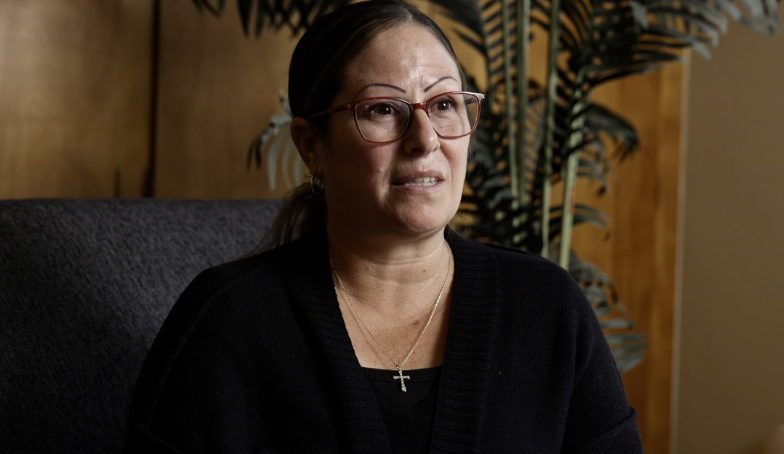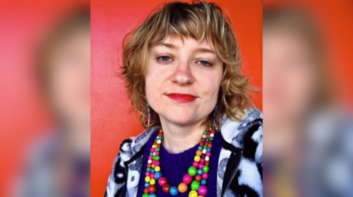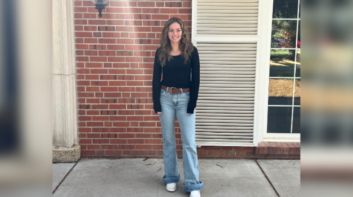Produced by: Kelsey Bolar & Andrea Mew
Written by: Andrea Mew
In 2009, Jennifer Barela was sentenced to 22 years for attempted murder, assault with a deadly weapon, and gang enhancements. A few years into her incarceration at Central California Women’s Facility (CCWF), Barela took charge of her life, focusing on “positive programming,” which she hoped would be her ticket home. Day-to-day, this meant getting up early to read her Bible, going to work at the dental lab as a full-time employee, then attending college at night as a full-time student.
While attending school, Barela made the honors list and eventually earned her associate’s degrees in business and sociology. At 8:45, which is yard recall in the evening, Barela said she’d return to her housing unit, shower, do her homework, then repeat the cycle.
But eleven years into Barela’s tenure at CCWF, California Gov. Gavin Newsom signed into law State Senate Bill 132. The bill allowed inmates identifying as transgender to serve their sentence in a correctional facility congruent with their “gender identity,” rather than their biological sex.
“I’m kind of a tough girl, so I knew I could stand my ground,” Barela said of her initial reaction to the new law. But after spending 11 years behind bars with women, then suddenly being forced to share bunk beds, toilets, and shower facilities with males, her perspective changed.
“We’re getting the predators—the sexual predators—people who have been incarcerated for rape, men who have been incarcerated for oral copulation, men who have been incarcerated for crimes against women,” she said.
Under SB 132, any incarcerated man—no matter the severity of his crime—can self-identify as a woman or as “non-binary” and be housed in women’s facilities. The law brought dozens of men into Barela’s prison.
Over the course of her final years behind bars, she was forced to share her small, eight-person living cell with two different male inmates—the second being Eva Reeves, an inmate who, when previously housed in male facilities, was isolated due to his physical and sexual assaults on other inmates, according to retired Los Angeles Sheriff’s Department Sergeant and Mexican Mafia expert Richard Valdemar.
California currently has 34 state prisons but only two dedicated to housing just women: CCWF and California Institute for Women (CIW). Now with the integration of male inmates under SB 132, women no longer have their own sex-segregated facilities.
“What that does is open the gateway for people who are seeking a way out of the men’s prison for whatever reasons they have to just say, ‘Hey, I identify as a woman,’ and now they are being housed in a woman’s institution,” Barela said.
CCWF has been called “Prisneyland” and praised as a paragon for modern incarceration models that shift the focus from punishment to rehabilitation. But when the prison began allowing males who identified as non-binary and transgender women to be housed alongside female inmates, Barela said the entire model was upended.
Barela pointed out that many incarcerated women experienced domestic violence, so having a male present in such close living quarters was “very traumatic” and triggered them back into reliving their past. Numbers vary, but reports say as many as 94% of female prisoners have experienced physical or sexual abuse prior to their incarceration.
Barela herself said she’s a survivor of sexual trauma.
According to Barela, the majority of male inmates get girlfriends and live with them after transferring to the women’s prison. One man, Barela said, came to CCWF wearing pink shirts, lipstick, and pigtails for his first three months, then cut his hair short, started wearing masculine clothing again, and got a girlfriend. Once this male inmate started living with his girlfriend, Barela said a vicious cycle of domestic violence began.
“It [SB 132] becomes a ‘Catch-22’ for the manipulators in the men’s institution to seek refuge somewhere else,” Barela said, pointing out how female inmates are inherently at a greater risk of violence and pregnancy.
In 2023, Barela received her second male roommate, Eva Reeves. Reeves, formerly known as Michael “Oso” Contreras, is an alleged “devil worshipper” who was found guilty of second-degree murder in 1982. He was known as “Oso,” Spanish for “bear,” due to his large, daunting presence. Experts believe that Reeves is responsible for at least 13 other murders.
“We [Barela and her female cellmates] didn’t want that type of person or activity in the room because we were all positive programming and trying to focus on getting home,” she said. According to Barela, Reeves already had physical altercations with women on a separate yard.
When she and her cellmates raised concerns about being forced to share a living space with Reeves, Barela said CCWF officers told her and her roommates that their hands were tied due to the new policy. So “if we were so uncomfortable with living with that individual,” she said, “we could pack up and they would find us a new spot to live.”
The women refused. They had been living in that eight-person room in the honor dorm for at least four years. Upon voicing their discomfort about living with a male offender, Barela said authorities proposed moving the seven women—instead of the one man.
A sympathetic member of their housing staff “knew it was uncomfortable,” but Barela said this employee couldn’t vocally advocate for the women because it would put her job at risk. Instead, the staffer was eventually able to move Reeves to a different room in the same unit a week later.
This was one instance of many that Barela said left female inmates in compromised, vulnerable positions. She said when male offenders are allowed to reside in women’s prisons, it felt “like their rights overrode ours.” In another instance, for example, Barela said that male inmates identifying as transgender got a room entirely to themselves—a privilege that other women living in tight, crowded cells would have loved.
“We would love to have a room to ourselves because every day you’re constantly around people, you have no peace of mind… there’s no solitude,” she said. “To be afforded a single cell, people would love to have that, but it was never afforded to the women, it was just to the men.”
During this time, Barela also noticed that female inmates started being called “incarcerated people” and that their women’s advisory council was neutrally renamed as “inmate advisory council.”
The new language embodies larger institutional changes happening inside one of the country’s largest women’s prisons, where women felt like their very existence was being demeaned and erased.
“We’re a forgotten entity, like women’s rights in a women’s prison do not exist,” she said.
After serving 15 years behind bars, Barela was released in 2023 and is now on parole. Barela felt compelled to share her experience of being forced to share a living space with a man under California’s new policy because she said she wants to be a voice for the women she left behind. While she personally doesn’t fear retribution and cannot lose her parole, she explained that many current and former inmates do carry this very real fear.
“A lot of ladies there would love to speak out, but there comes retaliation, fear of the men, physical harm, fear of the lawyers, fear of losing their day to come home,” she said. “What little rights that we did have as inmates have been diminished with the ‘trans men’ who’ve come in. And I just hope to give the women back some sort of voice.”










